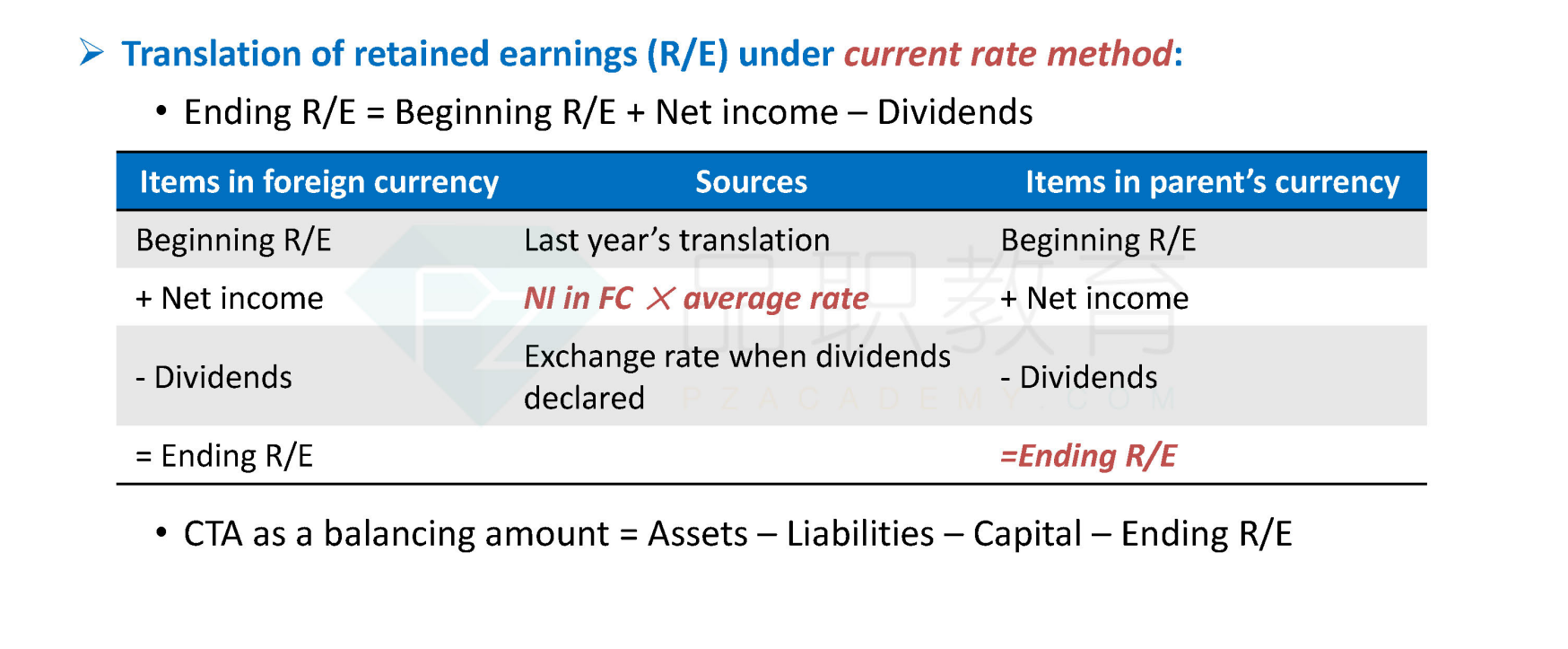NO.PZ201602060100001406
问题如下:
Based on the information available and Ruiz’s expectations regarding exchange rates, if the hryvnia is chosen as the Ukraine subsidiary’s functional currency, Eurexim will most likely report:
选项:
A.
an addition to the cumulative translation adjustment.
B.
a translation gain or loss as a component of net income.
C.
a subtraction from the cumulative translation adjustment.
解释:
C is correct.
When the foreign currency is chosen as the functional currency, the current rate method must be used and all gains or losses from translation are reported as a cumulative translation adjustment to shareholder equity. When the foreign currency decreases in value (weakens), the current rate method results in a negative translation adjustment in stockholders’ equity.
考点:exposure to translation
解析:
分析exposure时,外币和本币是站在母公司的角度,因为exposure都是针对于母公司股东的风险敞口分析,所以对母公司来说,子公司的当地货币就是外币。
如果子公司所在地的货币是functional currency , 此时functional currency= local currency, 应选择current method 。在current method 下汇兑损益计入OCI,就是CTA.
在current method下,exposure= equity , 一般都是大于0的 , 子公司货币贬值 , 转换后的金额更小 , 所以是亏损 , 即 a subtraction from the cumulative translation adjustment.
因此,选项C正确。
CTA= asset - liability -R/Eending -Capital; 题目中给出了current method 来计量,然后local currency 会贬值,由于Asset 和 liability 都是用current rate 来计量,所以Asset - Liab 不变,但是Capital 是按照历史,而历史的rate 是高的,所以CTA 会变小; 但是R/Eending 也会变小,因为NI 是按照current rate 来的,这样看CAT 会变大,这两个综合起来怎么看出CTA 的变化?
为什么Equity 可以代表题中的CTA?而不是把Equity 分成不同的项逐个分析?






